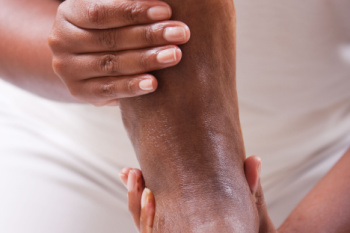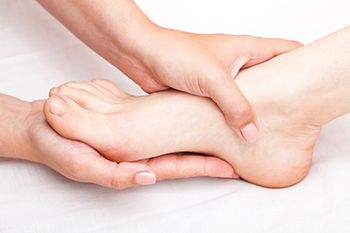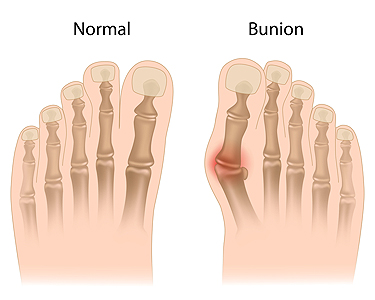Items filtered by date: March 2024
Foot Protection Is Important in Every Workplace

Foot protection is an often overlooked but critical aspect of workplace safety across various industries. Regardless of the job type, from construction sites to office environments, feet are susceptible to many hazards that can lead to injuries and discomfort. In industrial settings, heavy machinery, falling objects, and sharp materials pose significant risks to foot safety. Properly fitted and durable safety footwear can mitigate these dangers by providing impact resistance and shielding against punctures and crush injuries. Even in office settings, where the risks may seem minimal, slips, trips, and falls can result in painful foot injuries. Wearing comfortable and supportive footwear can help prevent these accidents and promote overall well-being during long hours of standing or walking. Employers play a pivotal role in ensuring that appropriate foot protection measures are in place, including providing employees with access to quality safety footwear and enforcing safety protocols. If you are seeking additional information about what type of foot protection to wear for your profession, it is suggested that you consult a podiatrist.
While working on the feet, it is important to take the proper care of them. For more information about working on your feet, contact Mark Poplawski, DPM from Jersey Shore Podiatry, LLC. Our doctor will treat your foot and ankle needs.
Working on Your Feet
Standing on your feet for long periods of time can cause stress and pain in your feet. Your whole body may experience change in terms of posture, back pain, bunions, callouses and or plantar warts. There are ways to avoid these conditions with proper foot care, smart choices and correct posture.
Positive Changes
Negative heeled shoe – Choosing this shoe type places the heel slightly lower than the ball of the foot. These are great for overall foot health. Find shoes that fit you correctly.
Go barefoot – Our feet were not designed to be enclosed for all hours of the day. Try to periodically expose your feet to air.
Eliminate Pain
Foot Exercises – Performing simple exercises, incorporating yoga and doing stretches are beneficial. This will allow increased blood flow to the area and muscles of the foot.
Achilles tendon – Stretching the foot out flat on the floor will relax the calf muscles and tendon. These exercises can be performed almost anywhere. Make sure you add these exercises to your daily regimen.
With a little bit of this information and knowing more about foot health, you will notice changes. Foot stretches and proper footwear will help with pain and prevent further issues.
If you have any questions please feel free to contact our office located in Toms River, NJ . We offer the newest diagnostic and treatment technologies for all your foot and ankle needs.
Our Feet Deserve Care

Taking care of your feet daily is essential due to their pivotal role in your overall health and well-being. Our feet support your body's weight, facilitate mobility, and enable you to carry out daily activities. Neglecting foot care over time can result in various issues, including calluses, corns, cracked heels, fungal infections, and more serious conditions like plantar fasciitis or bunions. These ailments not only cause discomfort but can also impair mobility and diminish quality of life. By prioritizing foot care and seeking professional help from a podiatrist when needed, you can ensure that our feet remain strong, healthy, and capable of supporting you throughout our lives. If you would like advice on how to take care of your feet, it is suggested that you schedule an appointment with a podiatrist who can guide you, as well as offer expertise in diagnosing and treating a wide range of foot ailments, promoting optimal foot function and overall well-being.
Everyday foot care is very important to prevent infection and other foot ailments. If you need your feet checked, contact Mark Poplawski, DPM from Jersey Shore Podiatry, LLC. Our doctor can provide the care you need to keep you pain-free and on your feet.
Everyday Foot Care
Often, people take care of their bodies, face and hair more so than they do for their feet. But the feet are a very important aspect of our bodies, and one that we should pay more attention to. Without our feet, we would not be able to perform most daily tasks.
It is best to check your feet regularly to make sure there are no new bruises or cuts that you may not have noticed before. For dry feet, moisturizer can easily be a remedy and can be applied as often as necessary to the affected areas. Wearing shoes that fit well can also help you maintain good foot health, as well as making it easier to walk and do daily activities without the stress or pain of ill-fitting shoes, high heels, or even flip flops. Wearing clean socks with closed shoes is important to ensure that sweat and bacteria do not accumulate within the shoe. Clean socks help to prevent Athlete’s foot, fungi problems, bad odors, and can absorb sweat.
If you have any questions please feel free to contact our office located in Toms River, NJ . We offer the newest diagnostic and treatment technologies for all your foot and ankle needs.
Are Bunions Affecting Your Everyday Life?
A Closer Look at Plantar Fibroma

A Plantar fibroma is a benign growth that develops on the plantar fascia, the thick band of tissue that runs along the bottom of the foot, connecting the heel to the toes. This condition typically presents as a firm nodule or lump in the arch or ball of the foot, causing discomfort and pain with weight-bearing activities. The exact cause of plantar fibromas remains uncertain, but factors such as trauma, inflammation, or genetic predisposition may contribute to their development. Plantar fibromas can vary in size and may gradually increase in size over time, potentially interfering with normal foot function and mobility. While plantar fibromas are non-cancerous and generally harmless, they can cause significant discomfort and impact daily activities if left untreated. In some cases, surgical intervention may be necessary to remove the fibroma and restore foot function. If you have noticed a lump or nodule on the bottom of your foot, it is suggested that you schedule an appointment with a podiatrist who can diagnose and treat a plantar fibroma or whatever else might be going on.
A plantar fibroma may disrupt your daily activities. If you have any concerns, contact Mark Poplawski, DPM of Jersey Shore Podiatry, LLC. Our doctor can provide the care you need to keep you pain-free and on your feet.
Plantar Fibroma
A plantar fibroma is a fibrous knot in the arch of the foot. It is embedded in the plantar fascia which is a band of tissue that extends from the heel to the toes along the bottom of the foot. There can be multiple plantar fibromas in the feet at the same time. There are no known causes for this condition. If you have a plantar fibroma, there will be a bump in the arch of your foot that cannot be missed. Any associated pain is most often due to a shoe rubbing against the nodule. Non-surgical options, such as steroid injections, physical therapy, and orthotics should be tried first. Surgery is a last resort and is the only thing that will remove a plantar fibroma entirely. Consult with a podiatrist for a proper diagnosis and to determine the treatment regimen that is right for you.
What Causes a Plantar Fibroma?
While there are no specific causes identified, a plantar fibroma can possibly come from genetic predisposition or the formation of scar tissue that forms from healing the tears in the plantar fascia.
What Are the Symptoms of a Plantar Fibroma?
There will be a noticeable lump in the arch of the foot that may or may not cause pain. If pain is felt, it is typically because a shoe is rubbing up against the lump or when walking or standing barefoot.
Treatment and Prevention
A plantar fibroma will not disappear without treatment, but it can get smaller and be a non-issue. If pain persists, a podiatrist examines the foot and when the arch of the foot is pressed, pain can be felt down to the toes. An MRI or biopsy might be performed to help diagnose or evaluate the plantar fibroma. The following non-surgical options are generally enough to reduce the size and pain of these nodules:
- Steroid injections
- Orthotics
- Physical therapy to help apply anti-inflammatory creams on the bump
Surgery is considered if the mass increases in size and the patient continues to feel pain after non-surgical methods are tried.
If you have any questions, please feel free to contact our office located in Toms River, NJ . We offer the newest diagnostic and treatment technologies for all your foot care needs.
Understanding What Bunions Are

A bunion, medically known as hallux valgus, is a common foot deformity that affects the joint at the base of the big toe. It appears as a bony bump on the side of the foot, causing the big toe to bend inward toward the lesser toes. Bunions develop gradually over time due to various factors, including genetics, foot structure, and footwear choices. Wearing tight, narrow shoes and high heels can accelerate the condition by putting pressure on the toes and forcing them out of alignment. As the bunion progresses, individuals may experience pain, swelling, redness, and restricted movement in the affected toe. Bunions can interfere with daily activities and affect overall foot function. It is suggested that you seek professional advice from a podiatrist for an exam. This medically trained foot doctor can offer treatment options that can help to alleviate symptoms and prevent complications.
If you are suffering from bunions, contact Mark Poplawski, DPM of Jersey Shore Podiatry, LLC. Our doctor can provide the care you need to keep you pain-free and on your feet.
What Is a Bunion?
A bunion is formed of swollen tissue or an enlargement of boney growth, usually located at the base joint of the toe that connects to the foot. The swelling occurs due to the bones in the big toe shifting inward, which impacts the other toes of the foot. This causes the area around the base of the big toe to become inflamed and painful.
Why Do Bunions Form?
Genetics – Susceptibility to bunions are often hereditary
Stress on the feet – Poorly fitted and uncomfortable footwear that places stress on feet, such as heels, can worsen existing bunions
How Are Bunions Diagnosed?
Doctors often perform two tests – blood tests and x-rays – when trying to diagnose bunions, especially in the early stages of development. Blood tests help determine if the foot pain is being caused by something else, such as arthritis, while x-rays provide a clear picture of your bone structure to your doctor.
How Are Bunions Treated?
- Refrain from wearing heels or similar shoes that cause discomfort
- Select wider shoes that can provide more comfort and reduce pain
- Anti-inflammatory and pain management drugs
- Orthotics or foot inserts
- Surgery
If you have any questions, please feel free to contact our office located in Toms River, NJ . We offer the newest diagnostic and treatment technologies for all your foot care needs.





